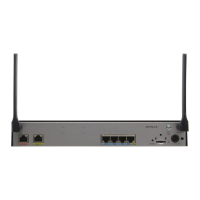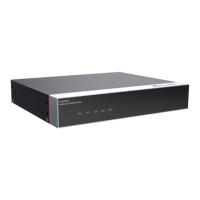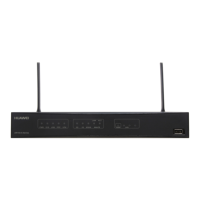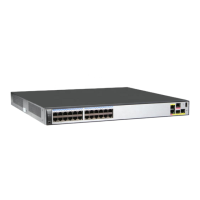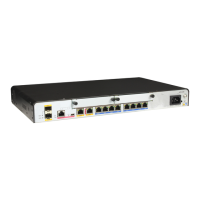The voice VLAN supports the secure mode and normal mode for transmitting different data
flows. Table 4-1 describes the two working modes.
Table 4-1 Packet processing in different working modes of the voice VLAN
Working Mode Processing Method
Secure mode The AR3200 checks whether the source MAC
addresses of packets match the OUI.
l If so, the AR3200 changes the priority of the
packets and forwards the packets.
l If not, the AR3200 does not change the priority or
forward the packets in the voice VLAN.
Normal mode
The AR3200 checks whether the source MAC
addresses of packets match the OUI.
l If so, the AR3200 changes the priority of the
packets and forwards the packets.
l If not, the AR3200 forwards the packets in the
voice VLAN without changing the priority of the
packets.
NOTE
When the source MAC address of a packet matches the OUI, the AR3200 changes the priorities of the
packet as follows to improve the transmission quality:
l Change the CoS (802.1p) priority to 6.
l Change the DSCP value to 46.
4.3 Configuring a Voice VLAN
This chapter describes how to configure a voice VLAN.
4.3.1 Establishing the Configuration Task
Before configuring a voice VLAN, familiarize yourself with the applicable environment,
complete the pre-configuration tasks, and obtain the required data. This helps you complete the
configuration task quickly and accurately.
Applicable Environment
As shown in Figure 4-1, terminals of the high speed Internet (HSI), voice over IP (VoIP), and
Internet protocol television (IPTV) services are connected to the Router through a home gateway
(HG). Users require high-quality VoIP services; therefore, voice data flows must be given a high
priority to ensure the call quality.
You can configure a voice VLAN on the Router to meet QoS requirements for VoIP services.
Huawei AR3200 Series Enterprise Routers
Configuration Guide - LAN 4 Voice VLAN Configuration
Issue 02 (2012-03-30) Huawei Proprietary and Confidential
Copyright © Huawei Technologies Co., Ltd.
125

